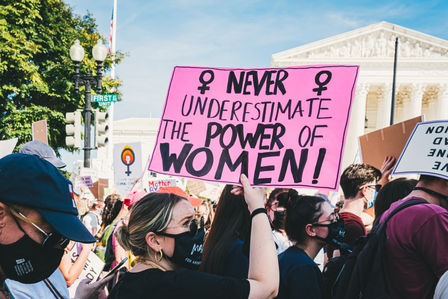
Gender Equality
Gender Equality
At the 1995 United Nations Fourth World Conference on Women in Beijing, China, First Lady Hillary Clinton changed the world when she said: “Human rights are women’s rights and women’s rights are human rights.” We have come a long way since the adoption of the Beijing Platform for Action nearly 25 years ago, however, at the current rate of progress, it may still take close to 300 years to achieve full gender equality.
The Women in Politics: 2023 map, created by the Inter-Parliamentary Union (IPU) and UN Women, presents data for women in executive positions and national parliaments as of January 1, 2023. The map clearly illustrates that women are underrepresented at all levels of decision-making worldwide, and furthermore that achieving gender equality in politics remains a struggle. As reported on the 2023 map:
-
Women serve as Heads of State or Government in only 31 countries
-
Women make up only 26.5% of Members of Parliament or Congress
-
Globally, less than one in four Cabinet Ministers or Secretaries is a woman (only 22.8%)
The data also shows that while women lead important human rights, gender equality, and social protection policy portfolios, men continue to dominate policy areas such as national defense and economy. According to IPU Secretary General, Martin Chungong: “We’re seeing ongoing progress in the number of women in politics this year, which is encouraging. However, we still have a long way to go to reach gender equality when we see the current rates of growth. With the interlinked crises of climate change, geopolitical tensions, economic instability, and social inequality, the world needs to better harness the talents of women and encourage them to enter politics sooner rather than later.”
When women and girls lack access to public forums in which they can share their ideas and lived experiences (and/or the ideas and experiences of their women constituents) to inform policy decisions, long-term sustainable development remains improbable at best—and impossible at worst. Efforts to achieve a just and sustainable future cannot ignore the rights, dignity, and capabilities of half the world’s population.
Our Sisterhood documentary aims to convey that women and girls should not be viewed merely as victims of inequality, but instead elevated as central actors and key assets in the global movement toward sustainability.
Questions for Discussion
The following questions are meant to spark further thought and discussion. You can use them as journal prompts, conversation starters for classroom discussions, dinner table topics, or even chat about them over coffee with sisters and friends.
-
How many women leaders can you name from your home country? What about world leaders who are women? Five? Ten? More than that?
-
What would it take to see more women and girls participating in government?
-
What would the world look like if more women held positions of power?
-
What makes women good leaders?
Further Resources
Bibliography
-
Inter-Parliamentary Union and UN Women, Women in Politics: 2023 (IPU and United Nations, February 2023), https://www.unwomen.org/en/digital-library/publications/2023/03/women-in-politics-map-2023.


















